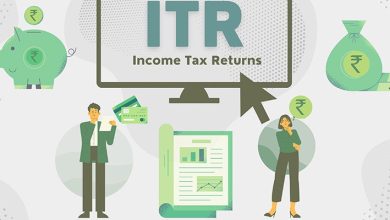Understanding Investment Taxes: A Fort Mill Perspective

Investing is one of the most effective ways to build wealth over time, but every dollar you earn through investments can come with a tax consequence. Whether you’re managing stocks, bonds, real estate, or mutual funds, understanding how taxes apply to your portfolio is critical. With guidance from a trusted tax consultant company Fort Mill, investors can minimize tax burdens, stay compliant, and build tax-efficient strategies tailored to long-term goals.
This detailed guide will help you navigate the most important aspects of investment taxes, explain different types of income, outline common strategies, and highlight how a professional can make a big difference in your outcomes.
Understanding the Types of Investment Income
Investments generate income in various ways, and each type is taxed differently. Knowing how each income source is treated helps you better manage your tax responsibilities.
Capital Gains
Capital gains occur when you sell an asset for more than its purchase price. They’re divided into two main categories:
-
Short-Term Capital Gains
These are profits from assets held for one year or less. They’re taxed as ordinary income, meaning your gains are added to your total income and taxed at your regular income tax rate, which could be as high as 37%. -
Long-Term Capital Gains
These are profits from assets held for more than one year. They benefit from preferential tax treatment and are taxed at lower rates—typically 0%, 15%, or 20%, depending on your income level.
The difference in rates between short-term and long-term gains can significantly impact your final tax bill, making it worthwhile to hold investments longer when possible.
Dividends
Dividends are payments made to shareholders from a company’s earnings. They come in two forms:
-
Qualified Dividends
These are paid by U.S. corporations or qualified foreign companies and meet IRS rules. They’re taxed at the more favorable long-term capital gains rates. -
Ordinary (Non-Qualified) Dividends
These are taxed as ordinary income, regardless of how long you’ve held the stock.
Understanding the difference helps you choose investments that provide more tax-efficient income, especially when your goal is passive cash flow.
Interest Income
Interest earned from bonds, CDs, savings accounts, or other fixed-income investments is taxed as ordinary income. This income is added to your total taxable income and taxed at your marginal rate.
In some cases, municipal bond interest may be tax-free at the federal level and potentially at the state level, which is a common tool for high-net-worth investors looking to reduce tax exposure.
Additional Investment Taxes: Net Investment Income Tax (NIIT)
For high-income earners, there’s an additional tax called the Net Investment Income Tax (NIIT). This 3.8% tax applies to individuals with a modified adjusted gross income (MAGI) above $200,000 (single filers) or $250,000 (married filing jointly). NIIT applies to income such as:
-
Capital gains
-
Dividends
-
Rental income
-
Interest
-
Income from passive business activities
This tax often surprises investors, so proper planning is essential if your income may approach these thresholds.
Tax-Advantaged Investment Accounts
Using tax-advantaged accounts can delay or even eliminate taxes on your investment income. Here are the main types:
-
Traditional IRAs and 401(k)s
Contributions are made pre-tax, reducing taxable income today. Earnings grow tax-deferred, but you’ll pay taxes when you withdraw funds in retirement. -
Roth IRAs and Roth 401(k)s
Contributions are made with after-tax dollars. Earnings grow tax-free, and qualified withdrawals in retirement are also tax-free. -
Health Savings Accounts (HSAs)
Contributions are tax-deductible, growth is tax-deferred, and withdrawals for qualified medical expenses are tax-free. -
529 College Savings Plans
These accounts offer tax-free growth and withdrawals when used for qualified education expenses.
By choosing the right mix of accounts, investors can manage taxes in both the short and long term. A reliable tax consultant company in Fort Mill can help design a plan based on your income level and retirement goals.
Common Strategies to Minimize Investment Taxes
1. Hold Investments Long-Term
To benefit from lower long-term capital gains rates, it’s wise to hold investments for more than a year. Even waiting a few extra months to sell a stock can reduce your tax liability by thousands.
2. Tax-Loss Harvesting
Tax-loss harvesting involves selling underperforming investments to offset gains from winners. You can deduct up to $3,000 in net capital losses against ordinary income per year, and carry forward excess losses to future years.
3. Asset Location Strategy
This strategy involves placing tax-efficient investments (like index funds) in taxable accounts and tax-inefficient assets (like high-dividend stocks or REITs) in tax-advantaged accounts. Proper asset location can improve after-tax returns over time.
4. Timing Sales Strategically
Plan your sales based on your income. Selling assets in a year when your total income is lower can reduce the capital gains tax rate you pay. This tactic is especially useful after retirement or during a sabbatical.
5. Gifting Appreciated Securities
Donating appreciated stocks to charity allows you to avoid paying capital gains tax and claim a charitable deduction. It’s an effective strategy for those looking to support causes and reduce tax exposure at the same time.
Tax Reporting for Investors
Each year, investors receive a set of tax forms that detail income and transactions:
-
Form 1099-B: Reports capital gains and losses.
-
Form 1099-DIV: Reports dividend income.
-
Form 1099-INT: Reports interest income.
These forms are essential for completing your tax return. Investors with multiple brokerage accounts or complex portfolios should work with a professional to ensure accurate reporting.
Case Study: How Professional Guidance Helped Save Thousands
Background
Brian, a 58-year-old engineer in Fort Mill, built a solid investment portfolio over two decades. In 2024, he decided to take a break from work and live on part of his savings. With multiple accounts, including brokerage, IRA, and Roth IRA, Brian was unsure how to structure his withdrawals and asset sales.
Solution
He met with a tax consultant company in Fort Mill to create a personalized strategy. Here’s what they did:
-
Delayed selling any short-term holdings to avoid higher taxes.
-
Used long-term capital losses from an earlier investment to offset recent gains.
-
Took a portion of his income from his Roth IRA to avoid pushing his taxable income into a higher bracket.
-
Scheduled the rest of his Roth IRA withdrawals over multiple years to avoid the NIIT threshold.
-
Moved high-dividend investments into his IRA and placed index ETFs into his taxable account for more tax efficiency.
Results
Brian cut his 2024 tax bill by nearly $7,000 and kept his MAGI below $200,000, avoiding NIIT entirely. More importantly, he now had a repeatable, well-structured plan for the next several years.
Why a Fort Mill Tax Consultant Company Matters
Tax planning isn’t just about crunching numbers—it’s about building confidence in your decisions. Here’s what you can expect from working with a Fort Mill–based tax consultant company:
-
Personalized Advice: Guidance tailored to your goals and risk tolerance.
-
Trusted Relationships: Long-term planning with a reliable, experienced advisor.
-
Proactive Strategies: Advice before tax season, not just after the fact.
-
Efficient Communication: Local consultants are easy to meet and understand your regional tax environment.
Companies like Carolina Tax Consulting, LLC have helped Fort Mill residents create tax-smart plans for decades, offering scalable solutions for new investors and seasoned professionals alike.
Frequently Asked Questions
Are all my investment gains taxable?
Not necessarily. Gains inside tax-advantaged accounts like IRAs or 401(k)s may not be taxed until withdrawn—or may be tax-free in Roth accounts.
Can I avoid capital gains tax completely?
In some cases, yes. If your total income is low enough, long-term capital gains may be taxed at 0%. Donating appreciated assets or using tax-loss harvesting can also reduce or eliminate the tax.
What if I inherit investments?
You receive a “step-up” in cost basis, which means gains during the decedent’s lifetime are not taxed. If you sell the assets right away, you may owe little or no tax.
Do I pay tax when reinvesting dividends?
Yes. Even if you automatically reinvest dividends, they’re still taxable in the year received.
Final Thoughts
Taxes on investments don’t need to be overwhelming. With the right information and guidance, you can build a portfolio that grows efficiently and keeps more money in your pocket. From understanding different income types to implementing advanced strategies like tax-loss harvesting and smart asset placement, every move matters.
Working with a Fort Mill accounting consultant gives you access to local, well-experienced professionals who understand your unique situation and can offer results-driven solutions. It’s one of the smartest investments you can make in your financial future.



